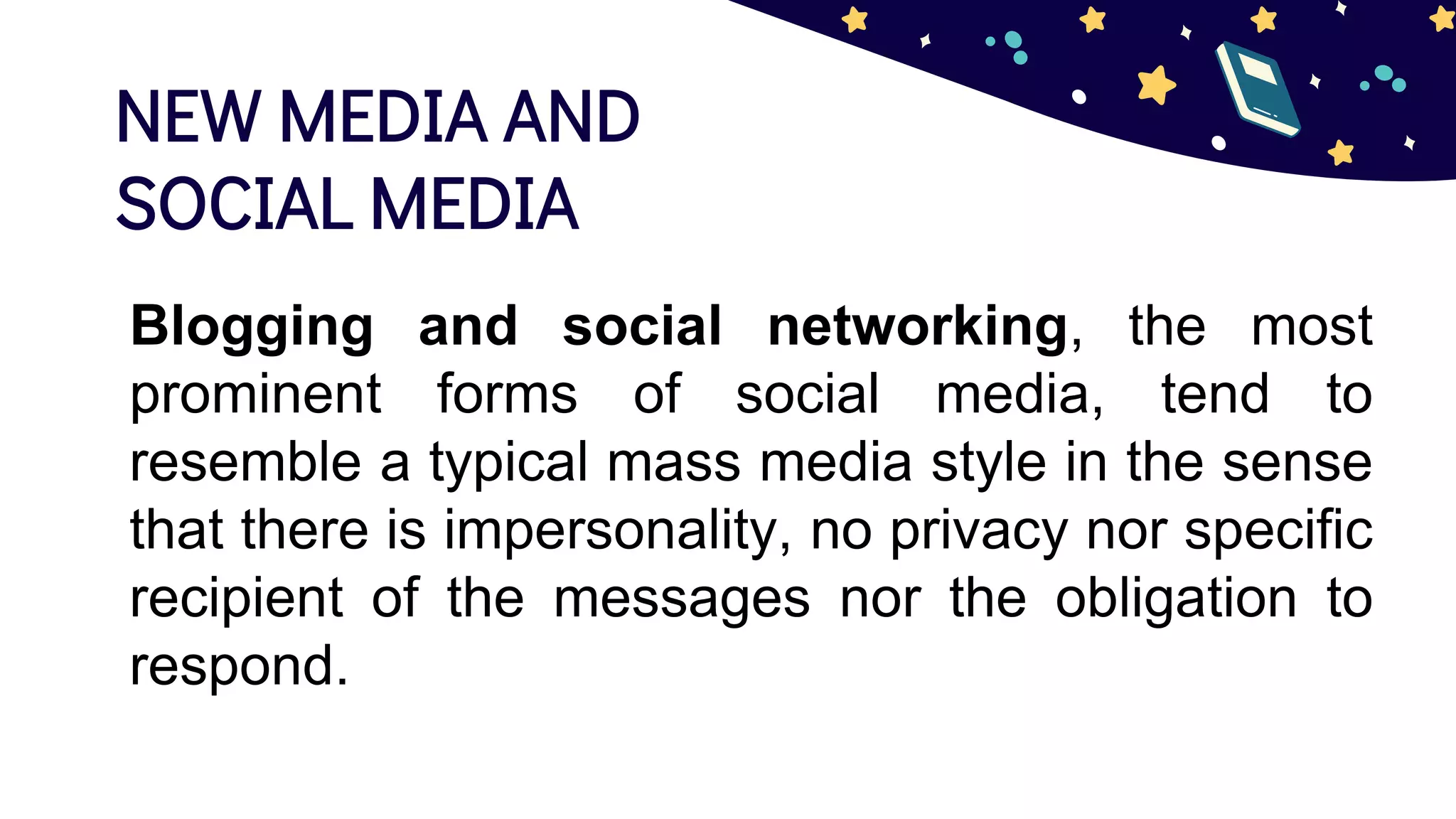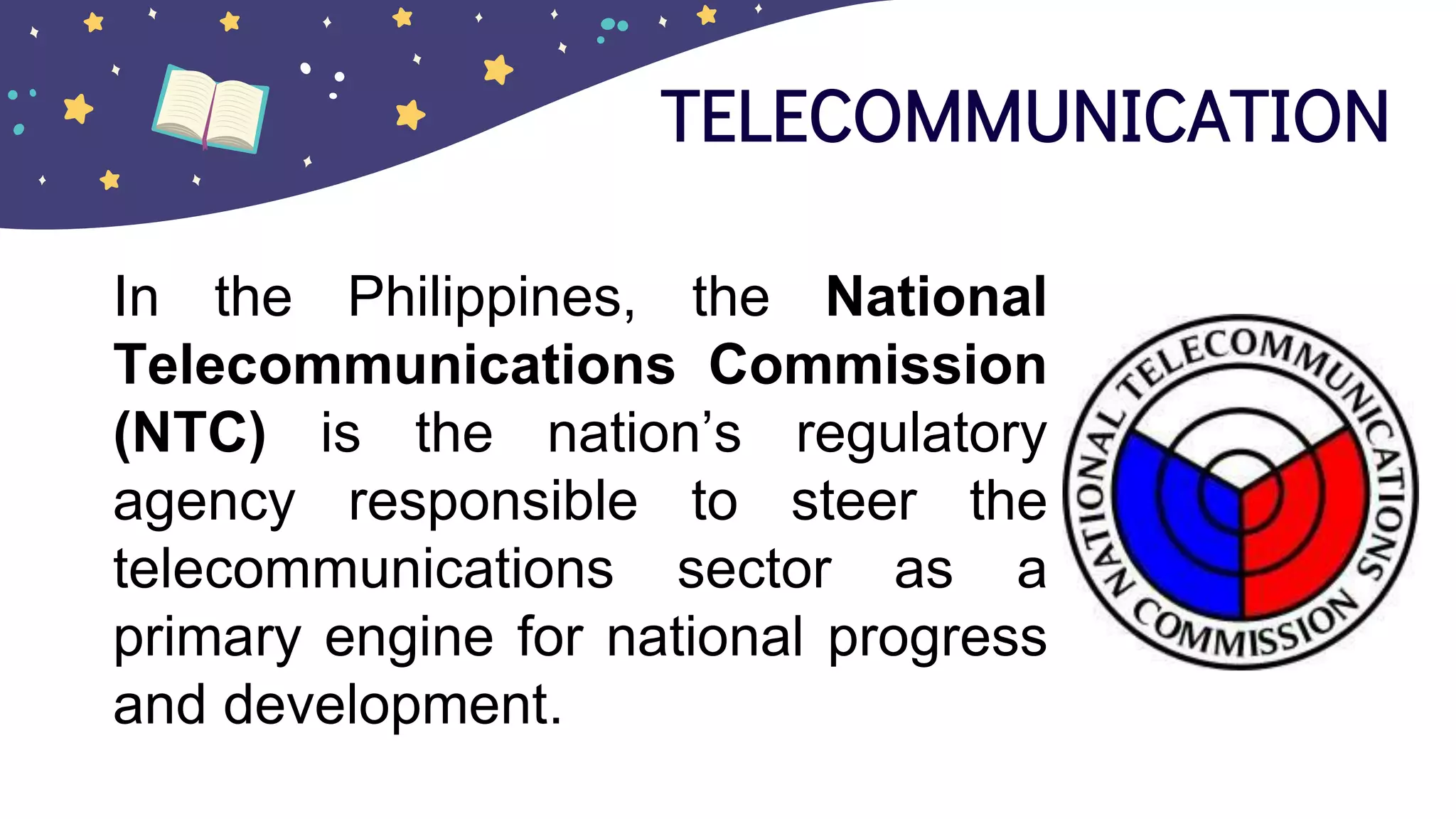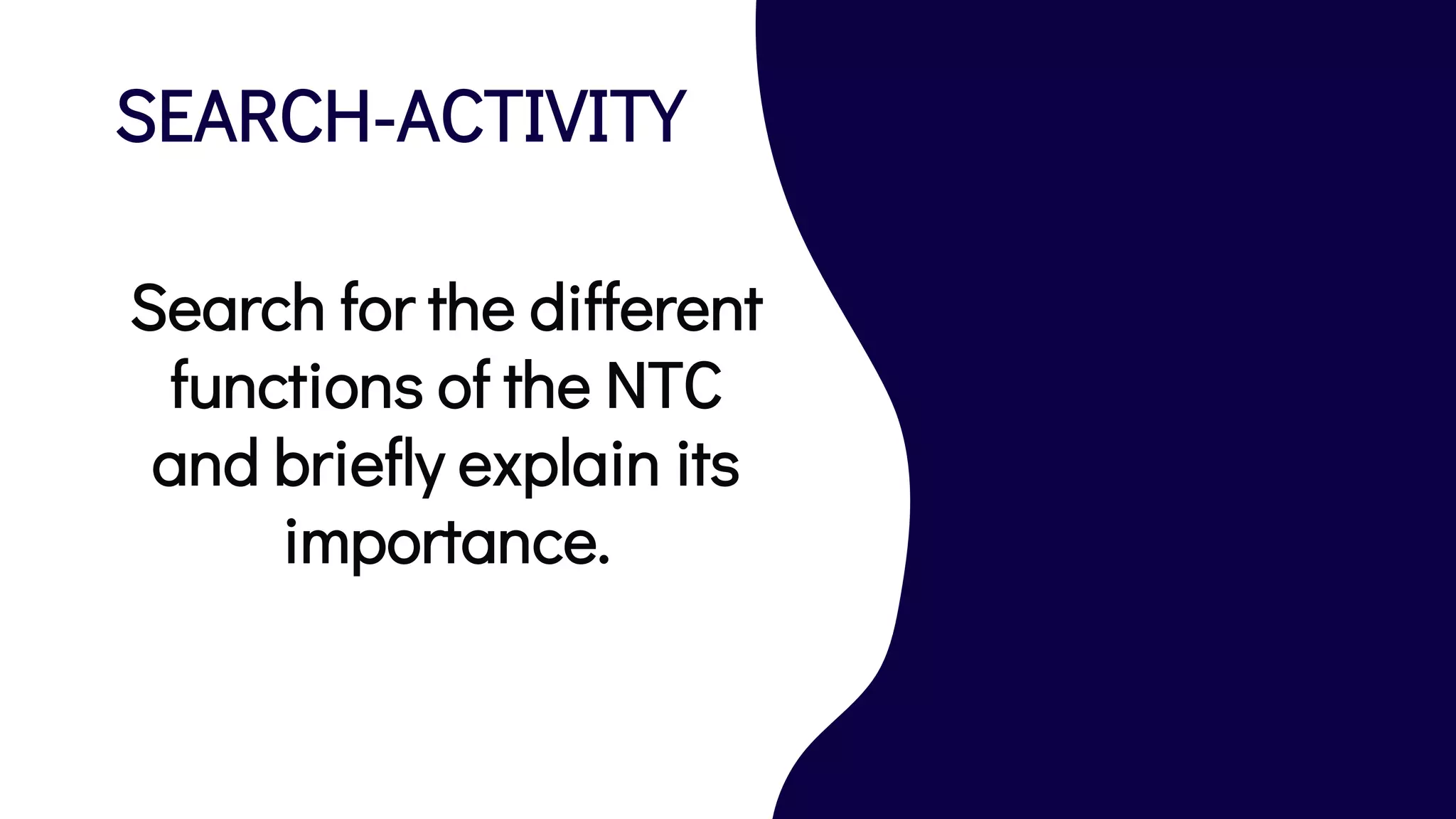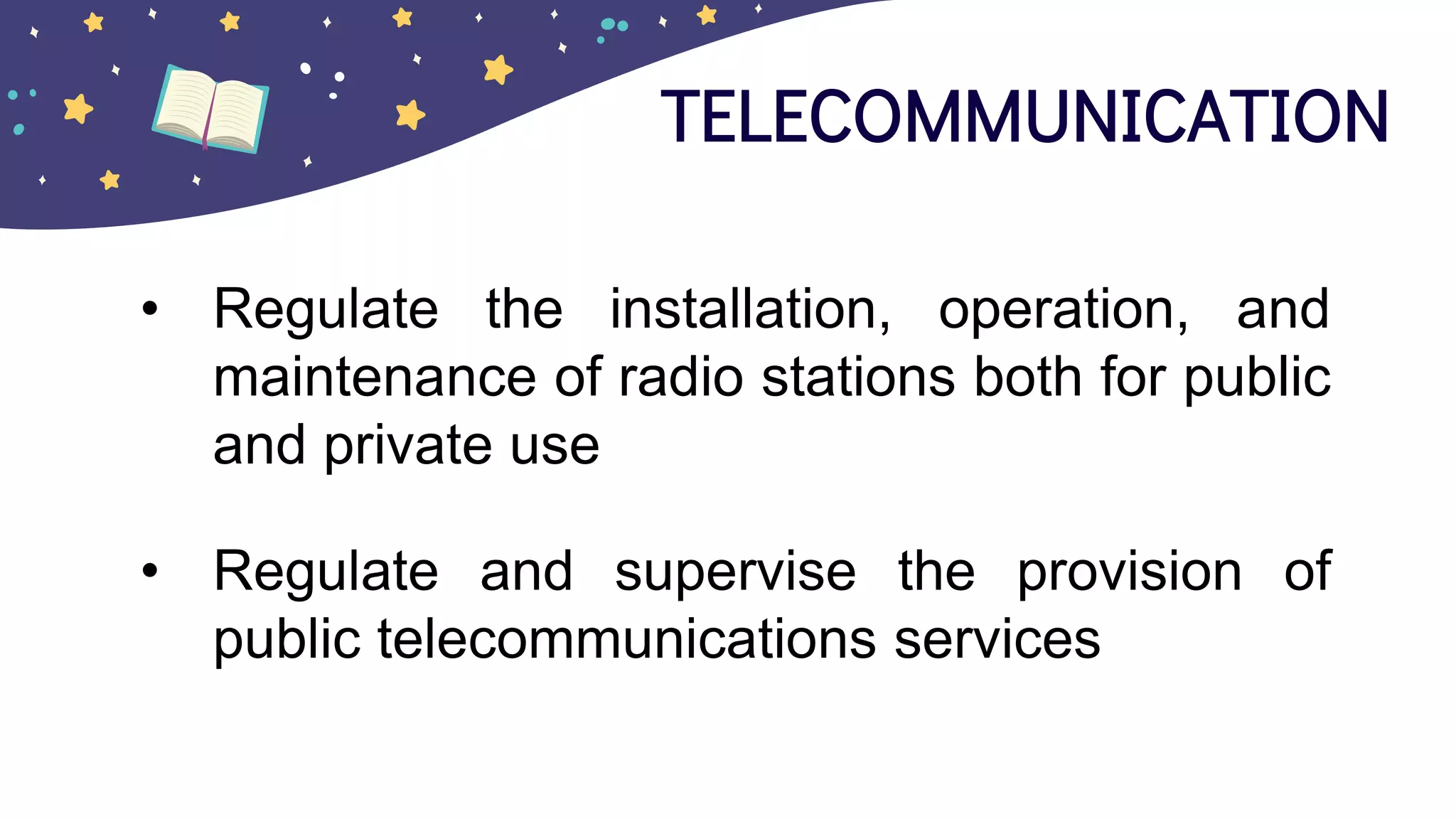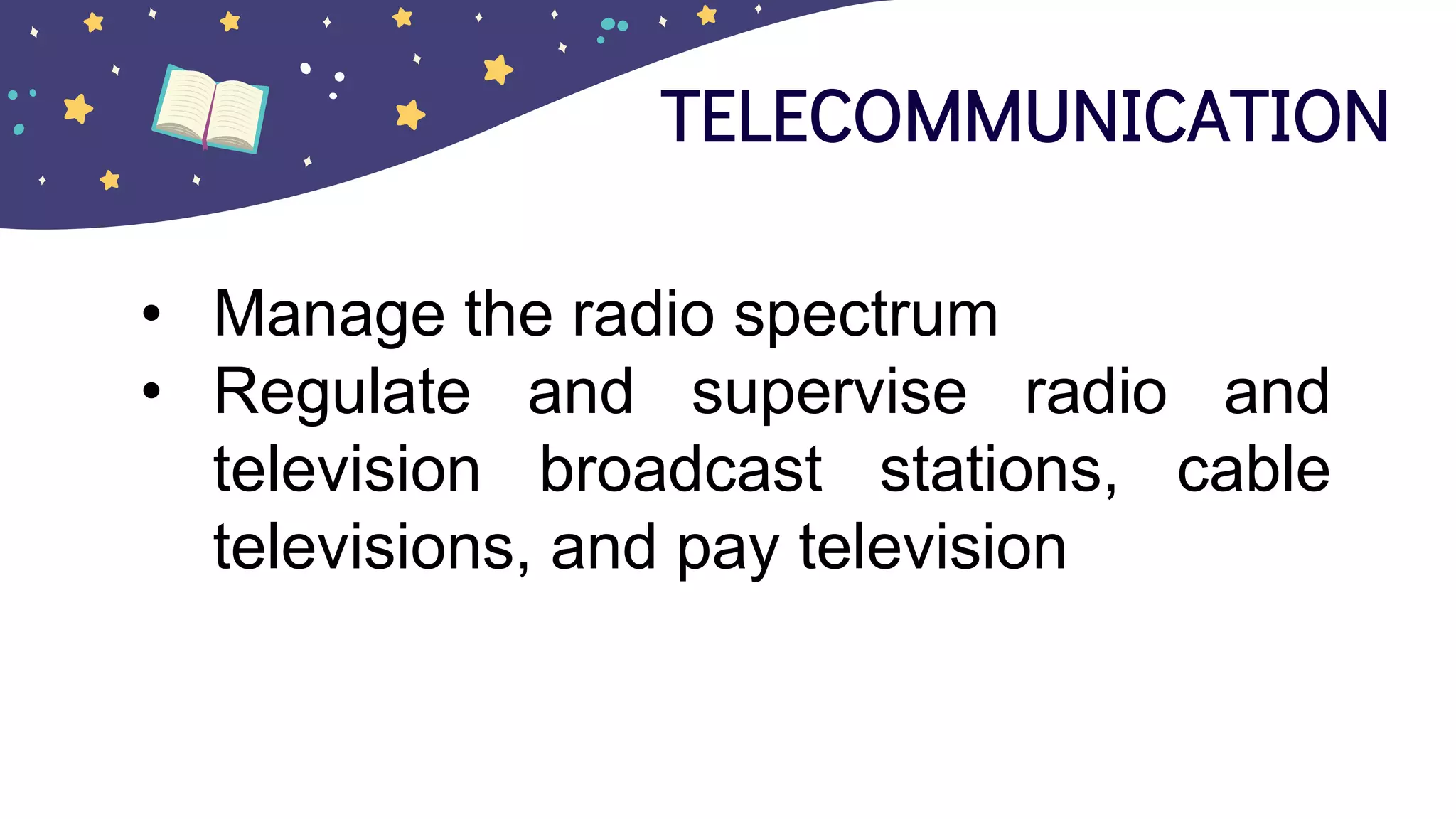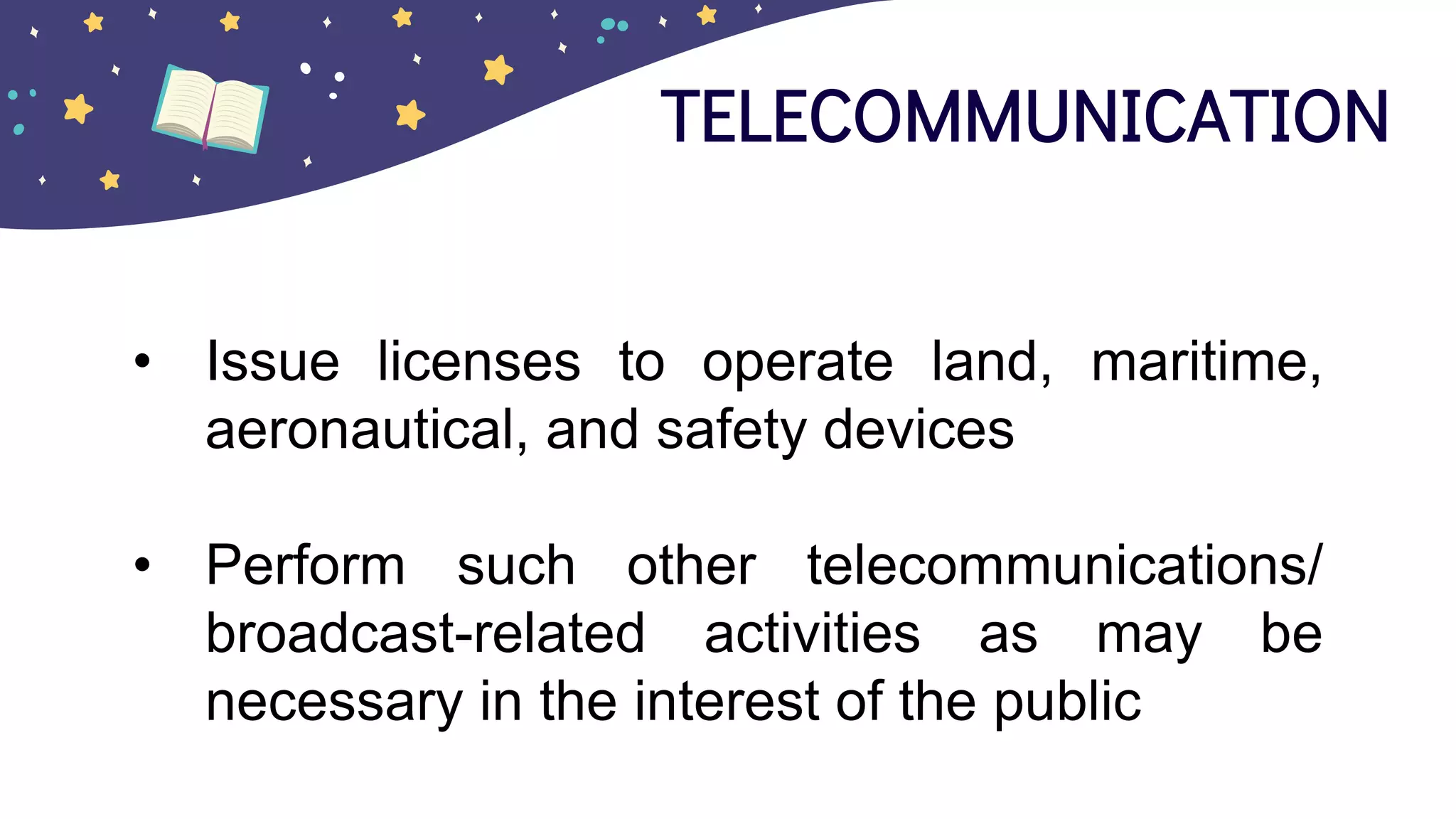This document discusses communication media channels and evaluating communication effectiveness. It defines different types of media like mass media, new media, social media, and telecommunication. Mass media transmits standardized messages to a wide audience using platforms like newspapers, magazines, radio, and television. New media and social media allow for more two-way dialogue on social networking sites and blogs. Telecommunication refers to transmitting information over long distances using technologies like phones and broadcast networks. The document also explains the functions of the Philippines' National Telecommunications Commission which regulates the telecommunications sector. Conducting needs assessments and monitoring & evaluating communication helps ensure effective message transmission and interpretation.










